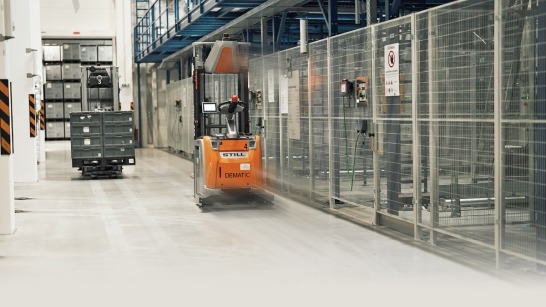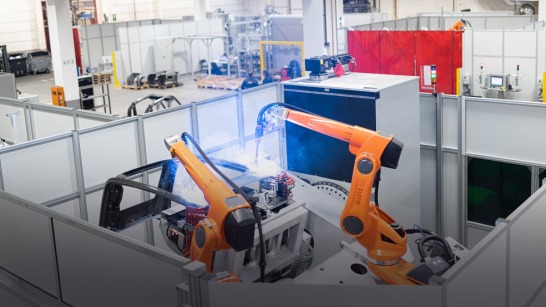Nobody Has to Put Themselves at Risk Thanks to Drones Inspections
Dematic believes the highest potential is in safety at the workplace. Some warehouses can measure up to 44 meters (144 feet) in height and at these levels, any irregularity can create a serious risk. “If a pallet has become damaged or jammed, the drone can simply fly in and take stock of the situation. It is a highly practical way of protecting the health of your workforce,” explains Kronfeld. Even trained employees who must climb structures at their workplace are at risk – vibrations can make the damage even worse, or the jammed pallets may suddenly detach completely.
The potential held by inspection drones was recognized by the KION Group right away. The Group provided total support to Kronfeld in all bureaucratic matters as the concept progressed: insurance, the patent process and product safety issues were cleared and they helped in achieving the CE declaration of conformity. “The drones are registered with the German Federal Aviation Authority and each drone is practically married to its pilot,” says Kronfeld. “Each drone has its own identification, just like airplanes, and the drone pilots have all received their pilot’s license.” Thus, every drone has a human pilot; but how long will that last?
Are Transport Drones Next?
Discussions are already underway at the KION Group regarding automated drones. In the future, aircraft alone just might perform routine tasks such as inventories once a drone's camera image can be linked to corresponding software that can read and scan stock or pallets. And the use of transport drones is also being investigated. “The design already exists,” notes Kronfeld. “However, specific safety issues remain unresolved. You would have to set up special flight corridors and comply with multiple guidelines and safety requirements.”
For the time being, there is still a long way to go before drones replace industrial trucks. But the considerations have demonstrated one aspect: Applications for drones in intralogistics is certain to expand sooner rather than later.





